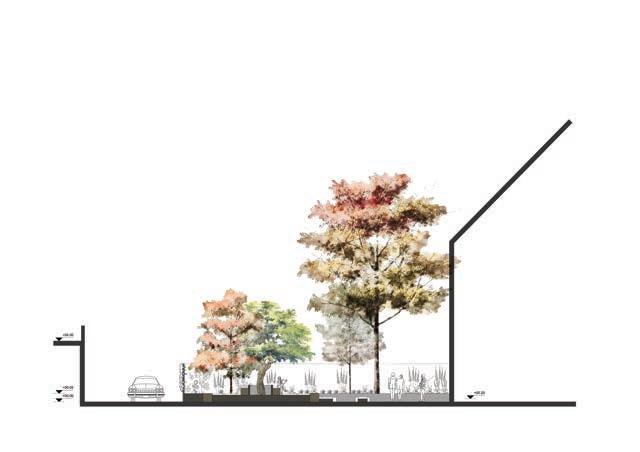
1 minute read
Conceptual Approach
Designing a center of tranquility that act as a space for well-being, self-sustained that provokes the mental and physical healing through an interaction with the landscape setting by motivating and restoring the ve senses of the users (sight, smell, touch, hearing, taste).
Variety of users may be seeking quite di erent things in the outdoor space; thus, di erent rooms and di erent zones are provided for each category: Sta garden, common area garden in the inner courtyard, children play gardens and rehabilitation and psychiatric garden.
Advertisement

Variety of users may be seeking quite di erent things in the outdoor space; thus, di erent rooms and di erent zones are provided for each category: Sta garden, common area garden in the inner courtyard, children play gardens and rehabilitation and psychiatric garden. The overall gardens are semi-private gardens, maintenance and use varies from one zone to another. Safety factor is considered in the children garden and is presented by creating bu er zones with high ornamental grass that would create special rooms. Engagement with nature through water features and vegetation are considered in the design. Curvilinear paths are created along the overall composition allowing the users to walk and experience the garden from di erent parts making the spatial connection with nature more smooth, active and dynamic allowing a constant ow throughout the garden. Varieties of seating options were created in di erent scenes which promote social interactions in some zones and individual experiences in some other zones for di erent spatial feelings.
The planting design and the di erent materials that are suggested provide a rich, multisensory experience (seasonal variety, color/texture combinations, fragrance, wildlife habitat) so that no matter the season or time of day, there is always something to engage a person’s attention. Acer campestre provides a habitat for bird’s nests. Pennisetum alopecuroides ‘Hameln’ attracts birds as well, Prunus cerasifera ‘nigra’ provides food source for them. Salvia o cinalis is a member of the mint family which attracts bees and butter ies.
The plants provide sensory engagement, such as ornamental grasses that move in the breeze, trees and other planting compositions that create changing shade patterns or have interesting owers.
SECTION B-B SCALE 1:100







